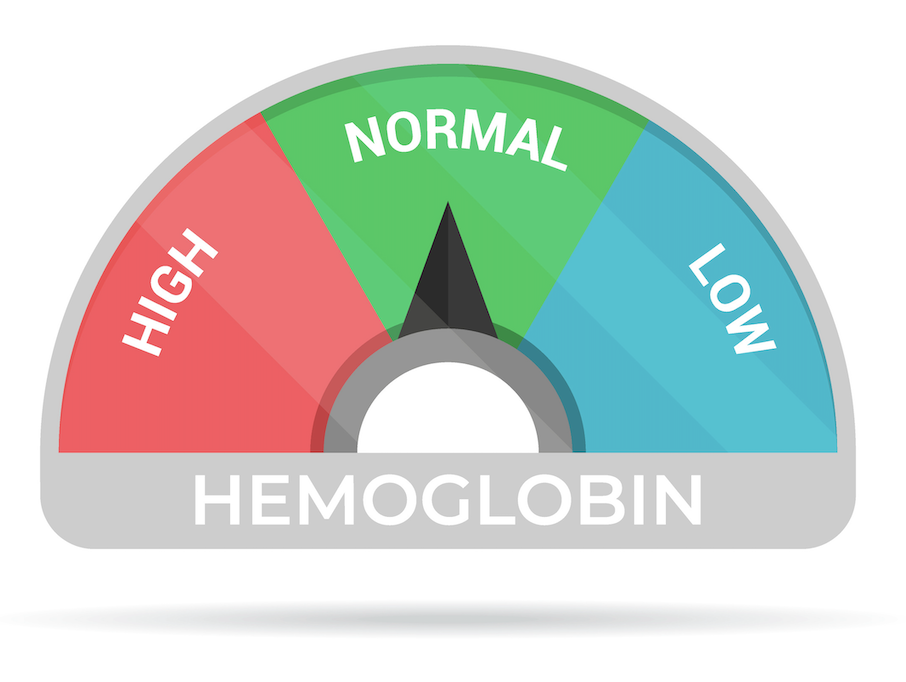
Four tips to maintain iron balance for blood donors
Volunteer blood donors have an increased risk of iron deficiency as red blood cells are the body’s major location for iron.
The most iron loss occurs with an automated double red cell donation. The least iron loss occurs with platelet and/or plasma donation. However, even platelet and plasma donors can have significant iron loss over time because of blood lost to perform donor screening tests.
Eating a diet rich in iron is unlikely to make up for all the iron lost with blood donation. Taking a daily iron supplement or a daily multivitamin containing iron for at least two months after a blood donation can help replace the lost iron. Please discuss with your health care provider before taking any new supplements.

Low hemoglobin is the #1 deferral reason
Low hemoglobin or hematocrit has sometimes been referred to as “low iron” although this term is not entirely accurate. The most common cause for low hematocrit is iron deficiency, but there are other causes. Iron deficiency can cause fatigue, weakness and even anemia. To ensure the well-being of blood donors in the Cincinnati Tri-State area, and everywhere, it's essential to maintain adequate iron levels.
Regular blood donation is a selfless act that saves lives. Unfortunately, not all people are eligible to donate blood. Having a low hemoglobin or hematocrit is the number one deferral seen at Hoxworth Blood Center, University of Cincinnati and among blood donors worldwide.
Discuss failed screening test with your primary physician
Men with screening hemoglobin or hematocrit less than 13 g/dL or 39% are ineligible to donate blood. The lower limit of the normal range of hemoglobin/hematocrit for men is approximately 13.5 g/dL or 40.5%. This can be concerning for male donors, but the screening hemoglobin/hematocrit test is not as reliable as a “venous” sample drawn into a test tube. Men may wish to discuss a failed screening test for hemoglobin/hematocrit with their primary physician.

Low to Normal Range
Women with screening hemoglobin or hematocrit less than 12.5 g/dL or 38% are ineligible to donate blood. The lower limit of the normal range of hemoglobin/hematocrit for women is approximately 12.0 g/dL or 36%, so not all women who are ineligible to donate blood are actually outside of the normal range. The hemoglobin/hematocrit is low enough that they should not donate blood to possibly fall below the lower end of the normal range.
Here are four tips and strategies to increase your iron levels and promote a healthy donation experience:
- Consider iron supplements
Dietary adjustments alone are usually insufficient to restore iron levels. If you donate blood frequently, you should consider taking iron supplements. A daily multivitamin containing at least 18 mg of elemental iron can help replenish iron losses associated with blood donation. Frequent platelet donors should also consider taking daily iron supplementation as some whole blood is taken with each donation for screening tests. However, always consult with a healthcare professional before starting any supplements to ensure proper dosage and avoid potential side effects in the context of your medical history.
- Eat iron-rich foods
Including iron-rich foods in your diet is crucial for maintaining healthy iron levels. Incorporate the following into your meals:
- Lean red meat, such as beef and lamb.
- Poultry, including chicken and turkey.
- Seafood, especially shellfish like oysters, clams and mussels.
- Plant-based sources like lentils, tofu and spinach.
- Fortified cereals and bread enriched with iron.
- Enhance your iron absorption
Pairing iron-rich foods with sources of vitamin C can significantly enhance iron absorption. Consider the following combinations:
- Enjoying a glass of orange juice with your iron-rich breakfast cereal.
- Squeezing lemon or lime juice over spinach or other leafy greens.
- Eating strawberries, tomatoes or bell peppers with your iron-rich meals.
- Including vitamin C-rich fruits or vegetables as snacks throughout the day.
- Optimize lifestyle choices
Besides diet, certain lifestyle factors can influence iron levels. Pay attention to the following aspects:
- Get enough sleep: Adequate rest and quality sleep can support iron metabolism.
- Manage stress levels: Chronic stress can negatively impact iron absorption and utilization.
- Stay hydrated: Sufficient water intake aids in the transportation of iron throughout the body.
Maintaining healthy iron levels is crucial for blood donors to continue their life-saving contributions. By incorporating iron supplementation, iron-rich foods and enhancing iron absorption with vitamin C, donors can support their iron levels effectively. Remember, before making any significant dietary or supplementation changes, it is always advisable to consult with a healthcare professional for personalized advice. Regular monitoring of iron levels, along with proper lifestyle choices, will ensure the well-being of donors and allow them to continue making a positive impact on the lives of others through blood donation.
Photo provided by Cincinnati Enquirer
Related Stories
UC study examines impact of incarceration on youth health
July 19, 2024
Samantha Boch, PhD, at the UC College onf Nursing, has studied the impact of incarceration on child and family health for more than a decade. Her latest research examines youth health in Cincinnati and relies on collaboration with Cincinnati Children's Hospital.
Camp aims to empower children, teens who stutter
July 17, 2024
A one-week, evidence-based program for children and teens who stutter at the University of Cincinnati will teach kids to communicate effectively, advocate for themselves and develop confidence about their communication abilities. Camp Dream. Speak. Live., which is coming to Cincinnati for the first time July 22-26, began in 2014 at the University of Texas at Austin. The Arthur M. Blank Center for Stuttering Education and Research at UT expects to serve more than 2,000 children at camps across the United States, Africa, Asia and Europe this year.
U.S. stroke survival is improving, but race still plays role
July 16, 2024
U.S. News & World Report, HealthDay and Real Health covered new research from the University of Cincinnati that found overall rates of long-term survival following stroke are improving, but Black individuals experience worse long-term outcomes compared to white individuals.
Presidential challenge to UC: Join Ride Cincinnati to fight cancer
July 16, 2024
UC President Neville Pinto has again challenged every UC college and unit to send at least one rider to the September 14 Ride Cincinnati event to help fundraise for cancer research and cancer care. UC students ride free. Signup by July 31 for free UC-branded cycling jersey.
Pediatric ICU rates linked to housing quality, income, education
July 16, 2024
Healio highlighted research led by the University of Cincinnati and Cincinnati Children's Hospital's Carlie Myers that found a link between pediatric ICU admission rates and housing quality, household income and education.
UC study: Long-term stroke survival improving, but racial disparities remain
July 15, 2024
New research from the University of Cincinnati published in the journal Neurology found long-term survival rates following acute ischemic strokes are improving, but Black individuals experience worse long-term outcomes compared to white individuals.
Students organize to shake up Parkinson's care model
July 15, 2024
University of Cincinnati student and Parkinson's Together founder Mallika Desai joined the Parkinson's Experience Podcast to discuss the nonprofit's origins and multidisciplinary mission to meet the needs of patients in their community.
Mobile app could help people manage fibromyalgia, UC study suggests
July 15, 2024
WVXU highlighted research led by the University of Cincinnati's Lesley Arnold and Swing Therapeutics that found a self-guided smartphone-based behavioral therapy led to significant improvements for patients with fibromyalgia.
UC study finds better cardiovascular health outcomes with home hemodialysis
July 15, 2024
Dialysis patients using a more traditional home hemodialysis procedure have lower incidence of cardiovascular disease than patients using a less invasive peritoneal dialysis at home, a University of Cincinnati researcher finds.
Heat waves in the U.S. kill more people in their homes than anywhere else
July 12, 2024
Tasha Turner-Bicknell, an associate professor in the UC College of Nursing, spoke with the Cincinnati Enquirer for a story about heat-related deaths. Many people are dying within their homes during periods of excessive heat and lack of air conditioning is a factor.
